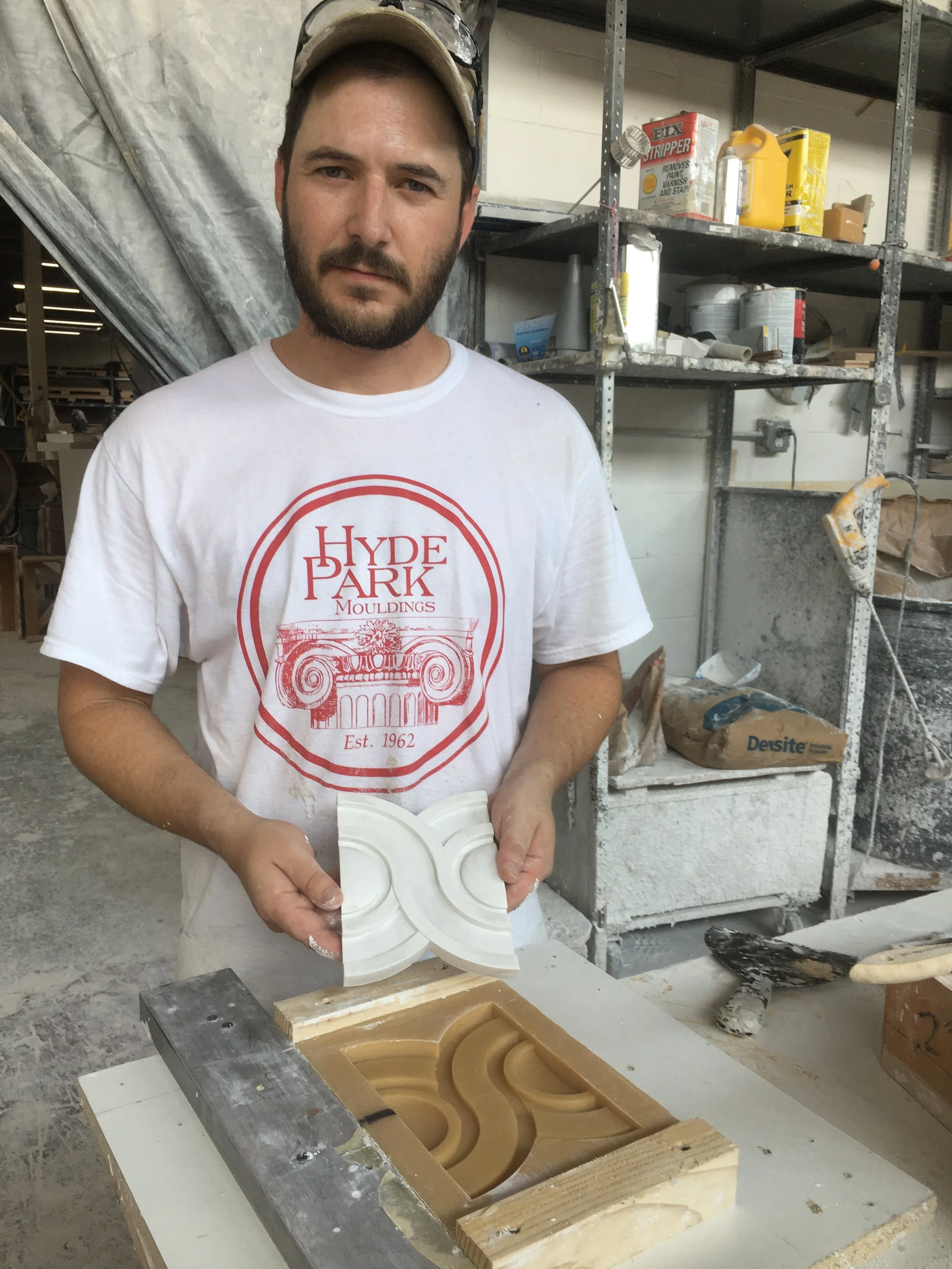Hyde Park Mouldings, Custom Shop
For the second part of my internship I would work in the Custom shop at Hyde Park. In the Custom shop the work consists of making master moulds that will then be replicated for production. We would make moulds of certain design elements from the design studio, and then cast them. I would also get to do some plaster running of large pieces. One of the most complex things I did was to help make a large mould of a pilaster to be replicated in a building. For this mould we would use fiberglass reinforcement which I have not used previously.
The work starts with drawings and precut metal knives for the plaster. Then the knives are sanded and attached to the running mould. For smaller peices the internal reinforcement might be a long strand of string or burlap, but for larger peices we would cut foam to shape the internal support. This was a great opportunity to get experience working with large amounts of plaster on a large scale, which helps you develop the needed appreciation for plaster and the delicate balance that is needed to make sure the work is completed quickly and professionally before the plaster starts to set. Unfortunately due to the time pressures I was not able to get as many photos during the running of the plaster, but I was able to get pictures of preparatory work.
The knife is attached to the running mould and all surfaces are then shellacked. It is important to not get shellac on the surface of the knife.
Nails can be angled to help secure the knife to the mould. The edge of the knife is then sanded to remove any irregularities.
The Running mould is then reinforced and stablaized along the top. These peices are used as grips when running the mould.
Foam is cut and arranged to fit inside the knife of the running mould for support.
This section of moulding would be later cut into dentils.
Burlap can be seen at the base of this moulding. Burlap cloth is cut and used to reinforce the base of the moulding. Attention musts be used to make sure the burlap does not come into contact with the knife or surface of the moulding. A fan is then used to help speed the setting of the plaster.
The dentils are then cut and arranged on the moulding.











